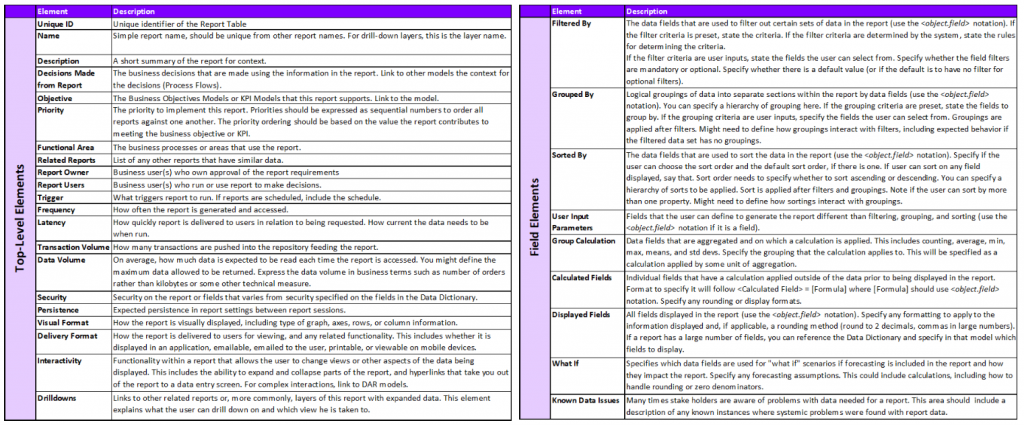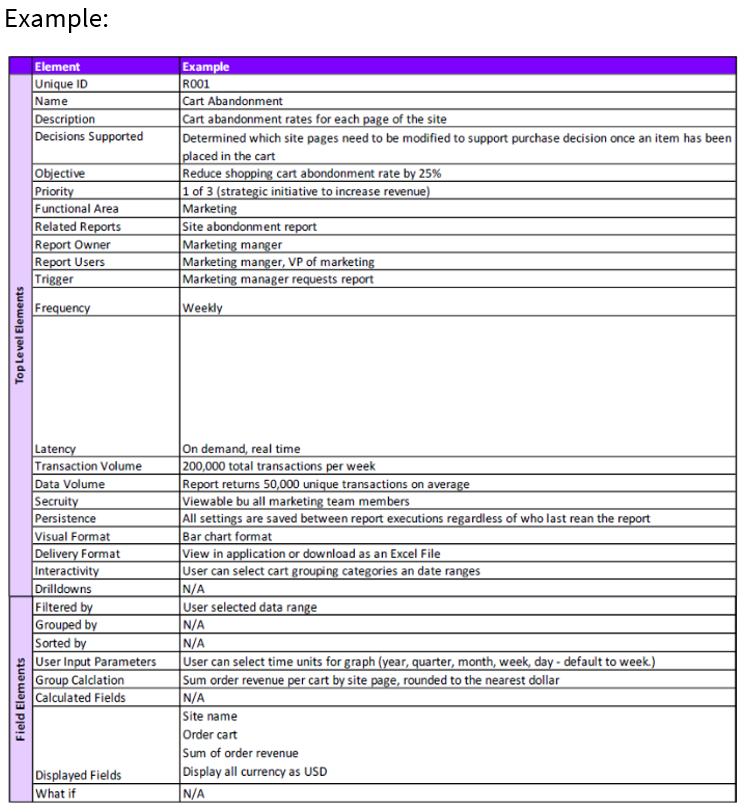Report Tables are data models that give an organized way to capture all the information needed to implement a report, including display data, formats of outputs, drill down views, and requirements for interaction with report data. Suited to traditional reports, they are also useful to discover requirements for any display of information that contains several fields that needs to be sorted, grouped, filtered, and/or aggregated.

The figure above contains descriptions for each of the elements and can be used as a key in the requirements document when presenting this model to stakeholders. Doing so helps stakeholders better understand the meaning of each Report Table element. To help stakeholders visualize the final report, consider also providing a sample of the report being specified.

Because it is difficult (or perhaps impossible) to be sure you have identified all reports, ensure you have the most important reports covered by mapping to every manual decision in the Process Flow. This can be done using a Requirements Mapping Matrix.
Learn more about requirements models in our book Visual Models for Software Requirements (Microsoft Press, 2012) Joy Beatty and Anthony Chen. (See Chapter 24 for Report Tables)
